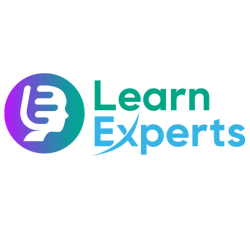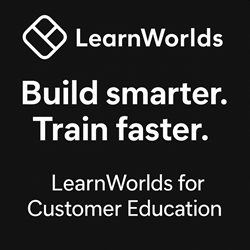In this episode of our CEO Series, Adam speaks with Jonathan Anderson, Co-Founder and CEO of Candu on the Power of the User Interface in your Product Adoption journey.
In March 2020, we are experiencing the world’s largest work from home “experiment”. In dark days of a global pandemic, how can Customer Education Professionals shine a little light? Join us as we share how the same strategies we use to reach a wide audience through online technologies can help you, your business, and maybe even your friends connect when in-person options aren’t an option!
Thought Industries also published a blog we wrote on this topic as a companion for this episode. Please check it out on the Thought Industries blog and read on for a summary.
Take the first step to online learning
It took a pandemic to significantly disrupt a common practice of many businesses: In-person training. Trainers find that virtual training isn’t quite the same and demands new skills and somewhat different approaches. Many instructional designers are perfectionists, and the idea of rapidly transitioning to online content goes against conventional wisdom to build methodically using ADDIE and similar frameworks.
But timing is critical. Instead of getting it perfect, you’ll now be saying, “Okay, I’m going to run a class. Do I have my talking points? Yes. Do I know what I’m going to talk about? Yes.”
Continue reading →In this episode, we talk with Wendy Hamilton of TechSmith. TechSmith creates products that you probably already know and love, because their easy-to-use tools help anyone create great video without needing strong video production skills at first. Listen in and hear how we as Customer Education Professionals can and should embrace video and build content that truly helps our customers – particularly in times where reaching out with On-Demand content is more important than ever!
In this episode we’re joined by Barry Kelly where he takes us on a journey from Default to Dynamic Measurement. Barry is the CEO and Co-founder of Thought Industries, the world’s leading B2B customer training platform provider. He is an external training champion, marketer, and digital learning innovator. His career has focused on supporting businesses to deliver impactful training experiences that increase customer lifetime value.
In this episode we discuss the “Rise of the Customer” with Sandi Lin, CEO and Founder at Skilljar. Educating your customers, while not a new concept, is a muscle that many Software-as-a-Service companies haven’t flexed. Listen in as Sandi shares her insight into the latest trends in Customer Education.
We’re getting into the holiday season, which means it’s a chance for us to take some time with our families and reflect on the year. In fact, we may be reflecting on the entire decade. It also means it’s a chance for us to let our hair down over at the CELab and have a little fun. So for this episode, our last for 2019, we’re going to talk about something that is close and personal to both Adam and Dave.
In this episode we talk shop about In-Product Education. There are many tools out there on the market like AppCues, Pendo, WalkMe, and more. Is this the new LMS? Listen in and we’ll break it down …
In this episode we share our experiences with one of the first “true” Customer Education events in our industry – Skilljar Connect 2019. Tune in to hear why this should be on your radar for 2020!
In this episode, Adam and Dave recap their experiences with DevLearn 2019! For Customer Education Professionals, this is an interesting event to check out, so join us as we explain what you can expect and how it can help you learn and expand your skills!
In this episode, Adam and Dave re-present the talk they gave at DevLearn 2019 in glorious Las Vegas, Nevada. Want to learn how to get a seat at the leadership table? Return-on-Investment for Customer Education will help get you there!



